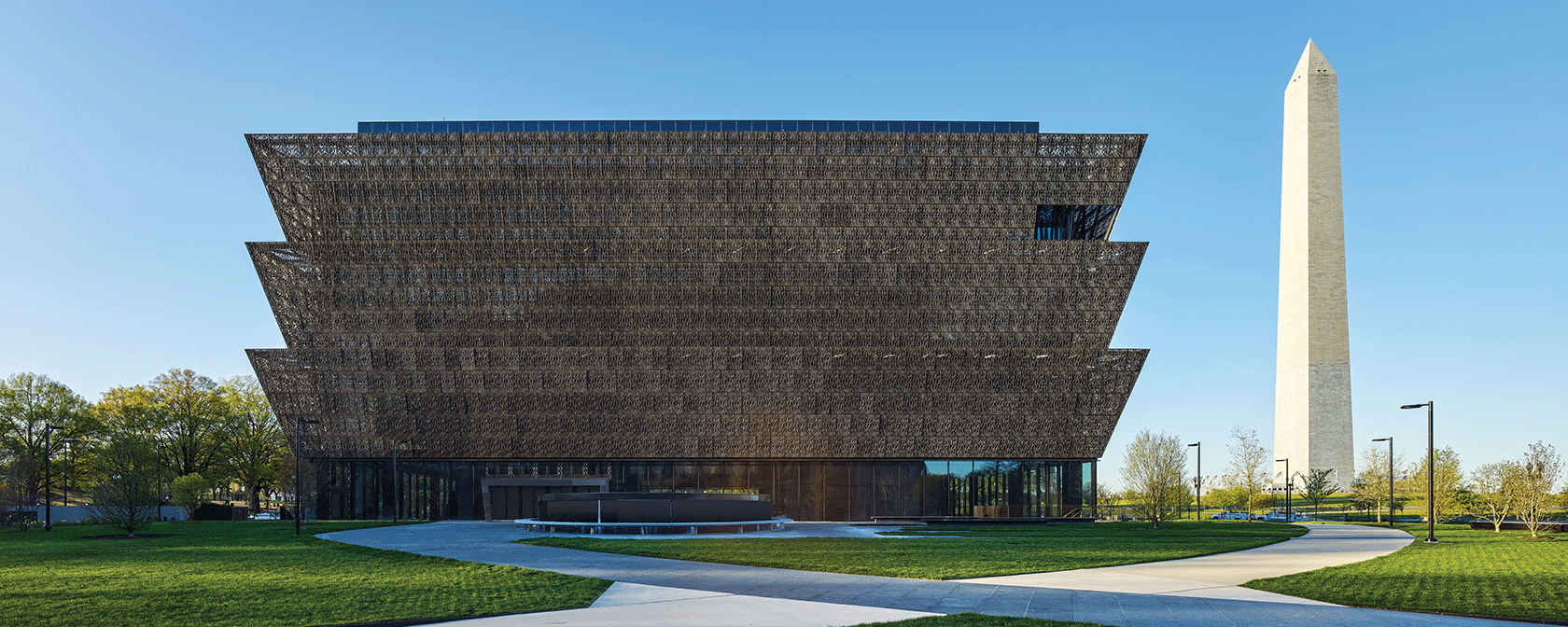
On September 24, 2016, President Barack Obama stated that “African-American history is not somehow separate from our larger American story, it’s not the underside of the American story, it is central to the American story,” as he inaugurated the National Museum of African American History and Culture.
This Black History Month, we, as MPAC Policy and Advocacy interns based in Washington, D.C. along with MPAC’s Director of Policy and Government Relations, had the privilege to visit the National Museum and learn about the rich cultural and historical contributions made by Black Americans. As our country is faced with attempts to erase African American history from our schools and communities, we wanted to take the opportunity to witness that history ourselves and truly understand the value that comes from it. The numerous exhibits displayed everything from the arts to advocacy, sports to civil rights, and provided a number of interactive features for visitors to engage with.
The museum is comprised of three sections, along with a concourse level and a contemplative court. Each floor highlights a different element of African American history and culture and is organized thematically and chronologically. The exhibits range from the emergence of slavery to the contemporary experience of African Americans, displayed through art, literature, music, politics, and more.
As young Muslims, the segment on the importance of faith throughout African American history struck a chord with us, particularly the display showcasing Muslim artifacts. Most prominently, the exhibit displayed the belongings of members of the Nation of Islam, including Islamic literature and publications, a uniform from the group’s first Islamic school, and pictures of Imam Warith Dean, who played a pivotal role in encouraging Black Muslims to engage in the political process.
Displays like these are proof of the longstanding and undeniable presence of African American Muslims in our history. Black Muslims are currently the largest population of native-born Muslims in the U.S. and their history is a central piece of the American religious fabric, making up 15-20% of enslaved Africans forcibly brought to the colonies.
Our favorite area of the museum can be found on the third floor, where a large space is dedicated to recognizing Black athletes across a myriad of sports. From tributes to Serena and Venus Williams to a memento commemorating Tommie Smith and John Carlos’s Black Power salute at the 1968 Olympics, the stories we learned of the athletes breaking through barriers in their respective sports were beyond inspirational.
On that same floor, revolutionary American Muslim boxer Muhammad Ali was honored with his own portion in the “Making a Way Out of No Way” exhibit, much of it going beyond his contributions to the sport and highlighting the important role that Islam played in his life. From his Fruit of Islam uniform put on display to his personal copy of the Quran, seeing the prevalence of his faith represented in such a clear way serves as a reminder that Islam empowers us to achieve our goals and encourages us to fight against injustice just as Ali did with his involvement in the civil rights movement and his opposition to the Vietnam War.
Our visit to the museum was a meaningful and interactive experience that allowed us to put our socio-historical understanding of African American history into perspective. Furthermore, it was an opportunity to reflect on the intersectionality of the Muslim and African American experiences, which offered a more comprehensive and nuanced understanding of the diverse experience beyond what we had learned through our K-12 education and socialization in college.
The National Museum of African American History and Culture visit was an insightful and emotional experience. It sparked discussions about the power of preserving stories and the collective call for justice through storytelling. This experience inspired hope and allowed for reflection on the historical legacy and contemporary reality of the African American experience.
We are grateful for the opportunity to visit the museum on behalf of MPAC in celebration of Black History Month. This trip was a poignant reminder of the critical fight against racism, bigotry, and discrimination. In the context of the 2023 Black History Month theme of Black Resistance, we recognize the efforts and bravery of those coming together to fight for change. We urge our community to stand up against these injustices, respond to calls-for-action, and continue learning about, and from, a community that has paved the way for many of us in today’s America.
Invest in MPAC’s work to improve public policies and perceptions. We’re changing how America views Islam and Muslims.